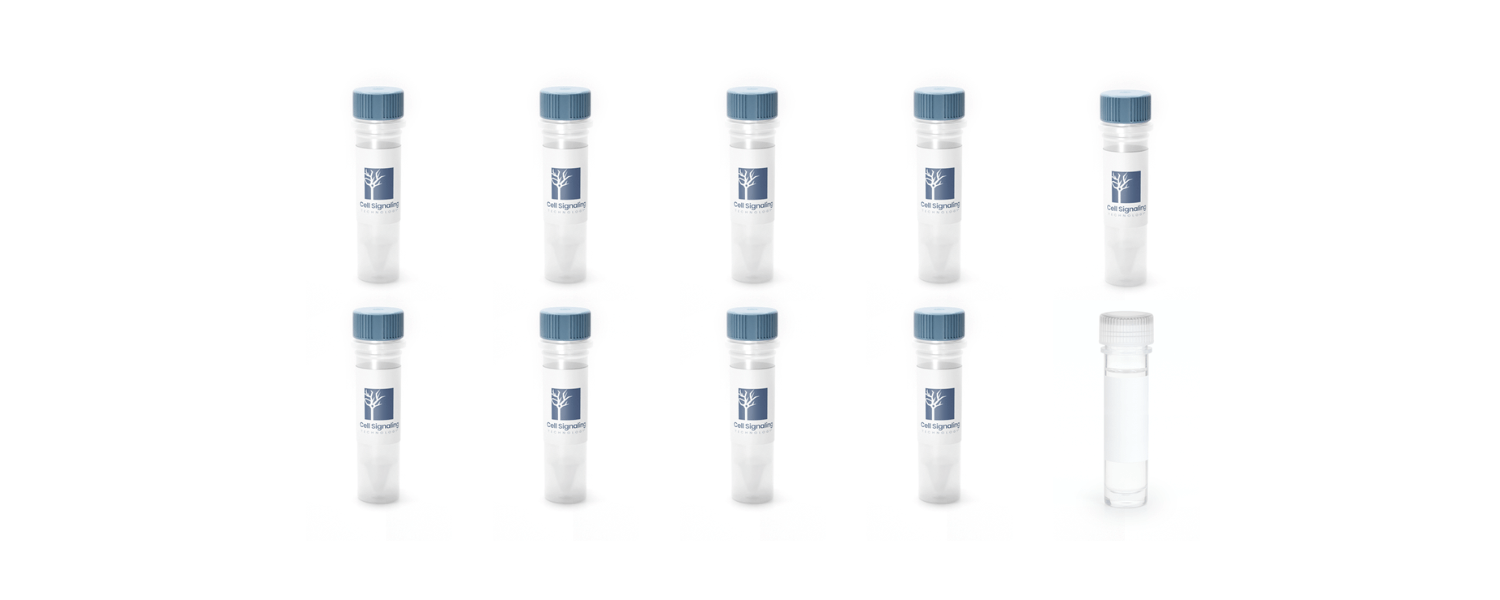Neurodegenerative disease research is in serious need of reliable biomarkers—whether to develop methods for early detection and diagnosis or to monitor the efficacy of potential new therapies, comprehensive research tools will help bring us closer to impactful discoveries. That’s where liquid biopsy comes in. Originally developed for cancer detection, this method of analyzing biofluids is dramatically changing neurodegeneration research. It is fast, quantitative, and can be easily translated from the bench to the clinic.
This blog highlights some of the key biofluid biomarkers for neurodegenerative conditions such as Alzheimer’s disease (AD), Parkinson’s disease (PD), and amyotrophic lateral sclerosis (ALS), which can provide insight into neuronal health and dysfunction.
<Jump to the product list at the end of this blog>
Alzheimer’s Disease Biomarkers
Alzheimer’s disease is characterized by the accumulation of misfolded proteins, leading to neural dysfunction and cognitive decline. Despite being the most common form of dementia, its exact cause is still unclear. What we do know, however, is that the disease is marked by two major hallmarks: amyloid β plaques and neurofibrillary tangles (NFTs).1
Amyloid-Beta Precursor Protein (APP) & Phosphorylated APP
APP is a transmembrane protein that is crucial to the development, growth, survival, and repair of neurons. When APP is cleaved via proteolysis, it breaks down into amyloid β (also referred to as β-amyloid).
%20monoclonal%20antibody%20_alzheimers%20disease%20biomarker_small.png?width=644&height=319&name=Hippocampus_Amyloid-beta%20precursor%20protein%20(APP)%20monoclonal%20antibody%20_alzheimers%20disease%20biomarker_small.png)
IF analysis of fixed frozen mouse hippocampus from wild-type (left) or an amyloid mouse model of Alzheimer's disease (right) using APP (E4H1U) Rabbit mAb #76600 (green), TMEM119 (E4B9S) Mouse mAb #98778 (red), and ProLong® Gold Antifade Reagent with DAPI #8961 (blue).
Phosphorylation impacts APP processing, influencing both its function and degradation. APP has several phosphorylation sites, each of which yield different functions. For example, phosphorylation at Thr668 is linked to cell cycle regulation and neural differentiation, while Ser655 is associated with increased proteolysis and aggregate formation.2
|
|
Recombinant monoclonal antibodies for APP and phospho-APP: |
Amyloid β
While amyloid β (Aβ) aids neuron health and plasticity in normal conditions, in Alzheimer’s, misfolded Aβ aggregates to form plaques that damage mitochondria, disrupt calcium homeostasis, and result in apoptosis.

Ready-to-use ELISA kit for measuring Aβ42/40 ratios from human CSF: PathScan® RP β-Amyloid (1-42) Sandwich ELISA Kit #27029 and FastScan™ β-Amyloid (1-40) ELISA Kit #20882.
Aβ consists of multiple fragments, the two most studied of which are Aβ42 and Aβ40 peptides. Both fragments are produced through the processing of APP. The Aβ42 isoform is more prone to aggregation than Aβ40, and the Aβ42/40 ratio has been identified as a potential tool for the early identification of AD. A lower Aβ42/40 ratio is associated with a higher amyloid burden in the brain and an increased risk of developing AD.
|
|
View all immunoassay-compatible β-Amyloid Matched Antibody Pairs from CST. |
Tau & Phospho-Tau
Tau proteins help stabilize microtubules, but in Alzheimer’s, hyperphosphorylated Tau detaches, forming NFTs that contribute to neuronal degeneration. These altered proteins are detectable in biofluids, making them important biomarkers.
 Discrimination of human AD from normal CSF using Phospho-Tau (Thr217) (E9Y4S) mAb #51625. (A) pTau217 levels were measured in human AD CSF and normal CSF using the SMCxPRO platform. (B) A receiver operating characteristic (ROC) curve was plotted to represent this data with an R score of 0.9995. Data kindly provided by Dr. Lei Liu and colleagues at Brigham and Women’s Hospital and used with permission.
Discrimination of human AD from normal CSF using Phospho-Tau (Thr217) (E9Y4S) mAb #51625. (A) pTau217 levels were measured in human AD CSF and normal CSF using the SMCxPRO platform. (B) A receiver operating characteristic (ROC) curve was plotted to represent this data with an R score of 0.9995. Data kindly provided by Dr. Lei Liu and colleagues at Brigham and Women’s Hospital and used with permission.
While tau can be phosphorylated at several sites, phosphorylation at threonine 217 (p-tau217) has emerged as a potential reliable biomarker, as levels of p-tau217 increase in autosomal dominant AD patients. Other sites, like p-tau181, are also being actively studied as biomarker candidates.
|
|
Matched Antibody Pairs for tau & phospho-tau: • Phospho-Tau (Thr217) Matched Antibody Pair II #51525 |
Parkinson’s Disease (PD) Biomarkers
Parkinson's disease slowly chips away at movement and coordination as dopaminergic neurons in the substantia nigra start to die off. One of the biggest culprits? Lewy bodies—clumps of misfolded proteins that pile up in neurons, interfering with their function and ultimately leading to cell death.
α-synuclein & Phospho-α-Synuclein
Normally, α-synuclein helps regulate presynaptic vesicle trafficking, but when misfolded, it aggregates into Lewy bodies, disrupting mitochondrial and synaptic function. Measuring both β- and α-synuclein in biofluids can elevate biomarker discovery and accuracy for Parkinson’s. In fact, α-synuclein detection from blood and CSF is currently being used in diagnostics.
|
|
Related products for α-synuclein and phospho-α-synuclein: • Phospho-α-Synuclein (Ser129) (D1R1R) Rabbit mAb (BSA and Azide Free) #87281 |
Glucocerebrosidase (GCase/GBA)
GBA is an important component of lysosomes. A deficiency in GBA interferes with the lysosomal breakdown of misfolded proteins, such as α-synuclein, leading to protein accumulation and neuronal stress. Mutations in the GBA gene are one of the strongest genetic risk factors for developing PD.3 Gene replacement therapy is currently being explored as a potential treatment, with one clinical trial already underway (NCT04127578).4
|
|
Related products for GCase/GBA: |
L-DOPA decarboxylase (DDC)
DDC is a pyridoxal 5-phosphate (PLP)-dependent enzyme that catalyzes the decarboxylation of L-DOPA to dopamine and L-5HTP to serotonin. It is currently under investigation as a promising fluid biomarker for PD.
|
|
Related products for DDC: |
Amyotrophic Lateral Sclerosis (ALS) & Frontotemporal Dementia (FTD) Biomarkers
In ALS, the progressive loss of motor neurons leads to muscle weakness and, eventually, paralysis. Some ALS patients also experience frontal and temporal lobe damage, resulting in cognitive impairment, a condition known as frontotemporal dementia (FTD). Interestingly, ALS and FTD share key biomarkers, offering insight into their overlapping pathology.
TAR DNA-binding protein 43 (TDP-43)
Normally, TDP-43 acts as a transcriptional repressor involved in gene regulation and metabolism. However, in ALS and FTD, mutations cause cytoplasmic relocation and aggregation, ultimately hindering mitochondrial and endoplasmic reticulum function.5,6
|
|
Immunoassay-compatible products for TDP-43: • Total TDP43 Matched Antibody Pair #93747 |
Huntington’s Disease Biomarkers
Huntington’s disease is a genetic disorder that progressively impairs motor and cognitive function. It stems from an expanded CAG repeat in the first exon of the huntingtin gene, which leads to a misfolded, toxic huntingtin protein. The basal ganglia and cortex take the biggest hit, with medium spiny GABAergic cells being the most susceptible to degeneration.
Huntingtin
The huntingtin protein interacts with more than 100 other proteins, including mitochondrial proteins. Its involvement with mitophagy means that mutations impair mitochondrial fusion/fission and cause cell death.7
|
|
Recombinant monoclonal antibodies for huntingin: |
Neuroinflammation Markers
Neuroinflammation is the activation of an immune response in the CNS by microglia and astrocytes. Typically, neuroinflammation occurs in response to CNS injury, infection, toxins, or as a consequence of autoimmunity. While transient neuroinflammatory signaling plays a protective role during development and tissue repair following injury, chronic neuroinflammation is associated with the progression of neurodegenerative diseases.
Interleukin-6 (IL-6), Interleukin-8 (IL-8), Tumor Necrosis Factor-α (TNFα)
In neuroinflammation, microglial hyperactivation results in the excessive release of proinflammatory cytokines such as IL-6, IL-8, and TNFα. These cytokines can be measured in plasma, making them excellent potential biomarkers for neuroinflammation.8
|
|
Recombinant monoclonal antibodies for IL-6, IL-8 and TNFα: • IL-6 (D5W4V) Rabbit mAb (BSA and Azide Free) #65145 |
Triggering Receptor Expressed on Myeloid Cells (TREM2)
TREM2 is a transmembrane protein expressed by activated microglia, contributing to anti-inflammation and repair. Its expression in the basal ganglia correlates with cognitive decline, a correlation also evident in Alzheimer's patients.9,10

The PathScan® RP TREM2 (Extracellular Amino-terminal Antigen) Sandwich ELISA Kit #90595 detects secreted TREM2 protein in the cell culture media of human iPSC-derived wild-type (WT) microglia cells, but not TREM2 knockout (KO) microglia.
During neuroinflammation, TREM2 is cleaved, releasing soluble TREM2, a form detectable in biofluids. TREM2 membrane shedding occurs by cleavage at the extracellular site between H157/S158, generating an N-terminal shedded fragment and a membrane-bound C-terminal fragment. Research studies using mouse models of Alzheimer’s disease indicate that deficiency and haploinsufficiency of TREM2 can lead to increased Aβ accumulation as a result of dysfunctional microglial response. These results agree with the distribution of TREM2 in human brain regions (e.g., white matter, the hippocampus, and neocortex) that are involved in Alzheimer's disease pathology. In addition, amyloid plaque formation induces expression of TREM2 and amyloid phagocytosis.
|
|
Related products for TREM2: • TREM2 (E4J7A) Rabbit mAb #55739 • TREM2 (E4F5G) Mouse mAb #29715 • PathScan® RP TREM2 (Extracellular Amino-terminal Antigen) Sandwich ELISA Kit #90595 |
|
Neuronal and Synaptic Markers
Beyond disease-specific markers, it’s also important to track neuronal health and synaptic integrity. These markers serve as controls but also provide insight into disease progression and treatment response.
Growth Associated Protein 43 (GAP43)
GAP43 is a marker for neuron growth, synaptic integrity, and plasticity. In Parkinson’s patients, GAP43 levels drop in dopaminergic neurons of the substantia nigra, which suggests those neurons are losing their ability to regenerate.11
|
|
Recombinant monoclonal antibodies for GAP43: |
|
Neurogranin
Neurogranin is a calmodulin-binding protein found in neuron dendrites and associated with long-term potentiation. It’s detectable in cerebrospinal fluid (CSF), and research suggests it could be an early biomarker for cognitive decline.12
|
|
Related products for neurogranin: |
|
Power Your Neurodegeneration Research with the Right Tools
Neurodegenerative diseases involve complex molecular changes, so why focus on just one biomarker? Matched Antibody Pairs and ELISA kits can help you to get a more complete picture of disease progression and pathologies like protein misfolding, neuroinflammation, and synaptic dysfunction.
At CST, we know that an assay is only as good as the antibodies used to develop it. That’s why we perform comprehensive validation testing on all our Matched Antibody Pairs by sandwich ELISA. Validation by plate-based ELISAs ensures each pair performs via the functional assay that underlies many of the modern immunoassay platform technologies used today.
Use the table below to explore relevant ELISA kits, matched antibody pairs, and validated detection tools to support your research:
Select References
- Hamley IW. The amyloid beta peptide: a chemist's perspective. Role in Alzheimer's and fibrillization. Chem Rev. 2012;112(10):5147-5192. doi:10.1021/cr3000994
- Zhang T, Chen D, Lee TH. Phosphorylation Signaling in APP Processing in Alzheimer's Disease. Int J Mol Sci. 2019;21(1):209. Published 2019 Dec 27. doi:10.3390/ijms21010209
- Boer DEC, van Smeden J, Bouwstra JA, Aerts JMFG. Glucocerebrosidase: Functions in and Beyond the Lysosome. J Clin Med. 2020;9(3):736. Published 2020 Mar 9. doi:10.3390/jcm9030736
- Blandini F, Cilia R, Cerri S, et al. Glucocerebrosidase mutations and synucleinopathies: Toward a model of precision medicine. Mov Disord. 2019;34(1):9-21. doi:10.1002/mds.27583
- Mengistu DY, Terribili M, Pellacani C, Ciapponi L, Marzullo M. Epigenetic regulation of TDP-43: potential implications for amyotrophic lateral sclerosis. Front Mol Med. 2025;5:1530719. Published 2025 Feb 13. doi:10.3389/fmmed.2025.1530719
- Jiang L, Ngo ST. Altered TDP-43 Structure and Function: Key Insights into Aberrant RNA, Mitochondrial, and Cellular and Systemic Metabolism in Amyotrophic Lateral Sclerosis. Metabolites. 2022;12(8):709. Published 2022 Jul 29. doi:10.3390/metabo1208070
- Meng K, Jia H, Hou X, et al. Mitochondrial Dysfunction in Neurodegenerative Diseases: Mechanisms and Corresponding Therapeutic Strategies. Biomedicines. 2025;13(2):327. Published 2025 Jan 31. doi:10.3390/biomedicines13020327
- Cartier, N., et al. (2014) The role of microglia in human disease: therapeutic tool or target? Acta Neuropathol. Published 2014 Aug 9. doi: 10.1007/s00401-014-1330-y
- Deczkowska A, Weiner A, Amit I. The Physiology, Pathology, and Potential Therapeutic Applications of the TREM2 Signaling Pathway. Cell. 2020;181(6):1207-1217. doi:10.1016/j.cell.2020.05.003
- Vuono R, Kouli A, Legault EM, et al. Association Between Toll-Like Receptor 4 (TLR4) and Triggering Receptor Expressed on Myeloid Cells 2 (TREM2) Genetic Variants and Clinical Progression of Huntington's Disease. Mov Disord. 2020;35(3):401-408. doi:10.1002/mds.27911
- Saal KA, Galter D, Roeber S, Bähr M, Tönges L, Lingor P. Altered Expression of Growth Associated Protein-43 and Rho Kinase in Human Patients with Parkinson's Disease. Brain Pathol. 2017;27(1):13-25. doi:10.1111/bpa.12346
- Casaletto KB, Elahi FM, Bettcher BM, et al. Neurogranin, a synaptic protein, is associated with memory independent of Alzheimer biomarkers. Neurology. 2017;89(17):1782-1788. doi:10.1212/WNL.0000000000004569



/42157_chimeric%20antibody%20blog%20featured3.webp)


